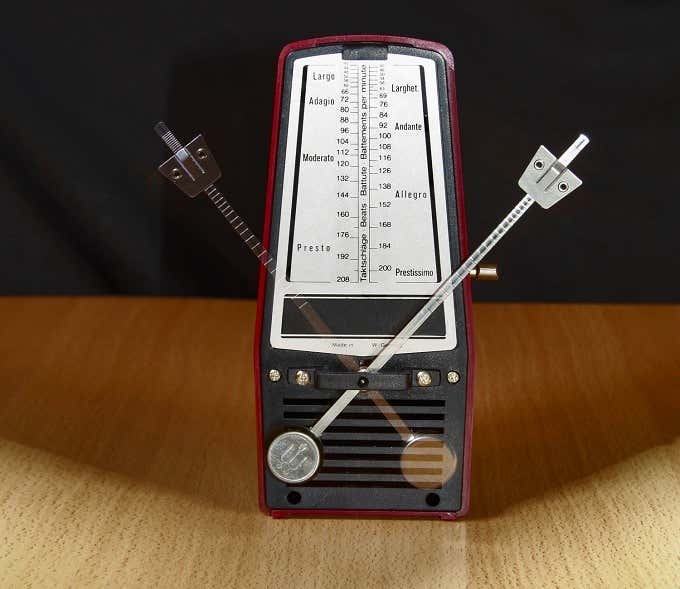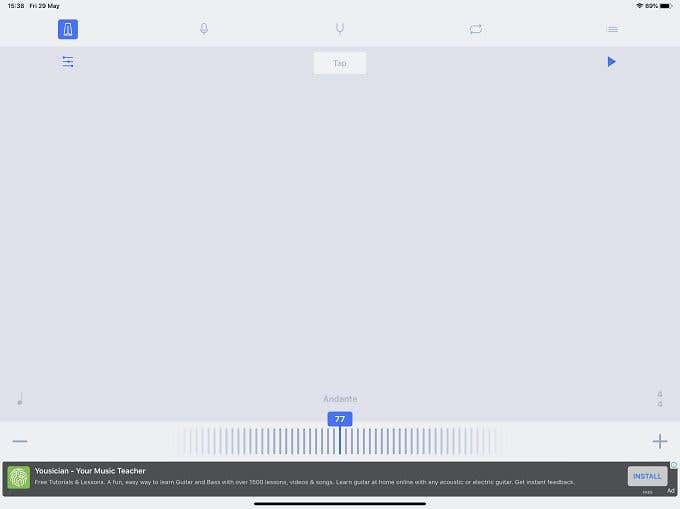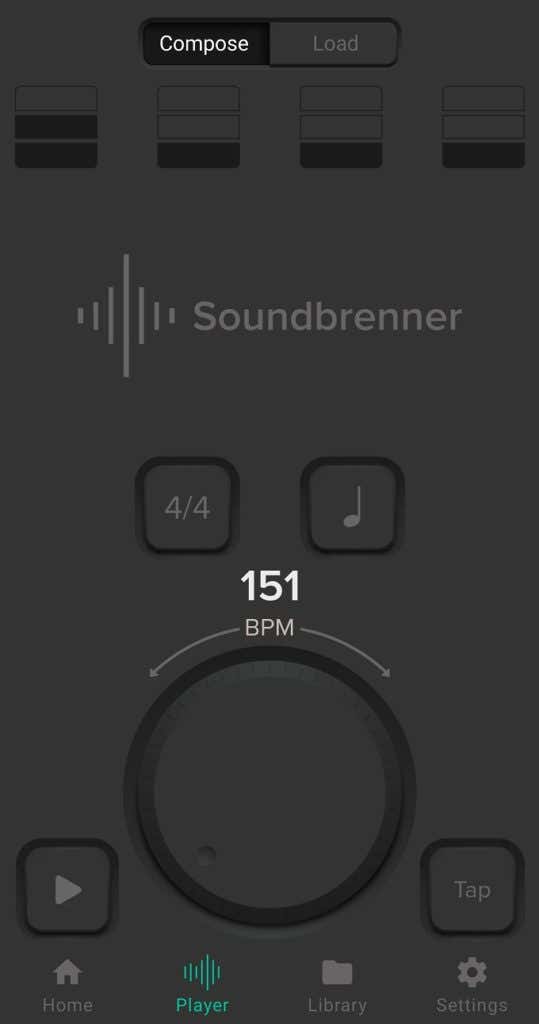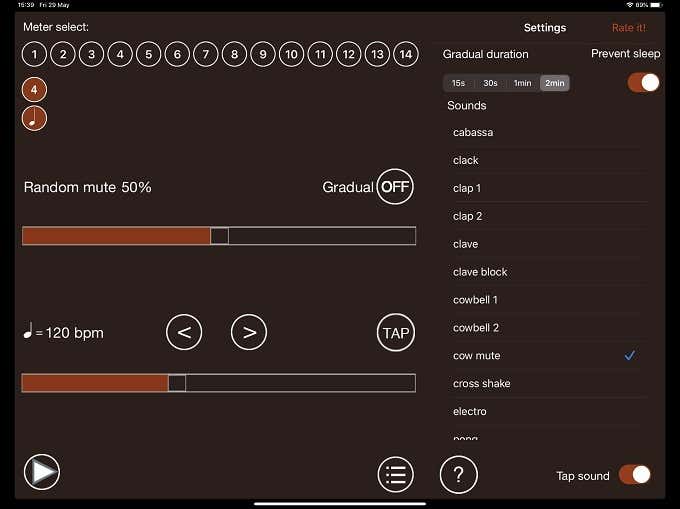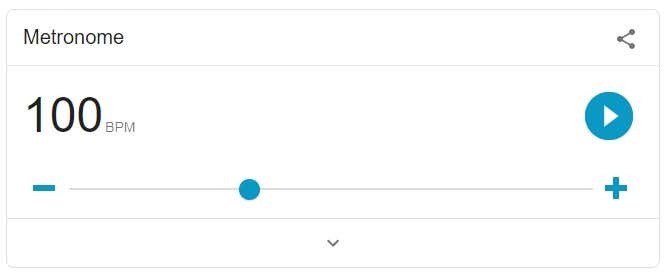It used to be that you’d have to spend a pretty penny on a mechanical or digital metronome, but in the age of the internet and smartphones it’s possible to simply get some metronome software instead. Here we’ve rounded up some of the best online metronomes and metronome apps to keep you on the beat.
What A Metronome Is Used For
Just in case you’ve been told by your music teacher to get a metronome, but have no real idea why, let’s go over its uses briefly. Broadly, music has two main components: melody and rhythm. A metronome is a device that helps you with the latter. It’s basically a timekeeping device that generates a steady pulse of beats. Music both has a tempo and a rhythmic pattern known as a “time signature”. The temp is simply how fast the music is played. This is the main job a metronome does. If you, for example, set it to 120 beats per minute (BPM) the metronome will tick 120 times in a minute. While mechanical metronomes only provide steady ticks, digital metronomes can also offer more complex options, such as providing beats that align with different time signatures. Metronomes help musicians to develop an innate sense of timing. It helps curb the phenomenon of “swinging the beat” where the player speeds up and slows down rather than playing consistently. Apart from helping you learn to play at a consistent speed, if you want to record your music professionally it’s important to have experience playing with a metronome. Recording engineers use a so-called “click track” that plays while you record. This helps ensure that all the musicians contributing to a multitrack recording will play in sync with each other, even if they are recording their parts one-by-one. There are even live performers who use a click track through their in-ear monitors that the audience can’t hear!
Metronome+ (iOS)
Metronome+ has been around for ages and is incredibly popular for a reason. The online Metronome app is no longer just a metronome. There are additional useful tools available such as a recorder and chromatic tuner. However, only the metronome itself is free and has a small advert at the bottom to help support the developers. That’s fine by us. If you only want a metronome then having to look at one tiny ad is OK. What we aren’t happy with is the full-screen popup video when you first open the app, but whether you can tolerate that is up to you. As for using the app itself, it’s both intuitive and easy. You can set the BPM directly and, helpfully, the app gives you the proper name for the different tempos (adagio, andante,etc) so you can impress your teacher. You can use the “tap” button to quickly figure out the tempo of music you’re listening to or trying to play along with. Metronome+ plus does have hidden depths however. Simply tap the settings button and you can make just about every change you could want to the beat, including the time signature. Overall, this is an excellent choice for the vast majority of people.
The Metronome by Soundbrenner (Android)
Soundbrenner claim that they developed “The Metronome” as a response to all the mediocre metronome online applications out there. Based on the (over) 50,000 reviews and a five-star average, clearly they did something right. The app is also completely free, so what gives? It turns out that Soundbrenner also makes wristwatch metronomes that can work with the app. So when you fire the app up, you’ll have a bit of marketing thrown at you. If you choose to simply use the app, you’ll be met with one of the nicest-looking metronome apps you can get for any price. It has all the functions a musician would need, such as beat tapping, time signatures and note subdivisions. It also lets you load up presets for different songs. This really is one of the best online metronome apps we’ve seen and the fact that you don’t have to put up with third-party advertising is staggering. Highly recommended!
Time Guru (Android)
Time Guru is not free. You’ll have to pay a few dollars for the privilege of owning this app, but if you like solutions that are a little left of field, Time Guru might be well worth the small asking price. The difference between this and something like the Soundbrenner metronome is in intention. The Soundbrenner metronome aims to be the most elegant, core metronome it can be. Time Guru can work as a normal metronome as well, but it has a few neat features that do a better job of helping you develop an accurate sense of time. For example, you can choose to randomly mute beats as a way to challenge yourself and ensure you can keep time even when the metronome isn’t helping. While the interface is a little clunky and unattractive, these clever features might just be what students struggling to perfect their sense of time need.
The Google Metronome
Sometimes simpler is better. Google has a great many little tools that pop up when you type in certain search terms. For example, when you type “calculator” into Google search, there will be a fully functional calculator tool at the top of the search results. If you’re looking for a metronome quickly, you can just find one using a nearby device with a browser and an internet connection. It works on mobile browsers as well. We tried it using the mobile Chrome app, which means you always have a free online metronome in your pocket. The metronome itself is extremely basic. You choose a BPM number and click play. As far as we can tell, it’s pretty consistent, but a rhythm tapping or clicking function would have been welcome for those times you don’t know the exact beat of the piece you’re trying to play. Still, it’s a good tool to keep in your back pocket in case of musical emergency.
Just In Time
Can a software metronome ever be a replacement for a mechanical or dedicated electronic model? There’s going to be a lot of disagreement among musicians, but each solution has its place. The main weakness of software metronomes is that they can be affected by the system they run on. So if you have a phone that doesn’t have many free resources, for example, it might struggle to provide you with a consistent beat. On the other hand, all of the metronome online apps we tested above each one performed the basic function of timekeeping as well as we could humanly tell. In terms of their main job – helping you develop a good sense of rhythm, there’s not doubt a good software metronome will be just fine.
